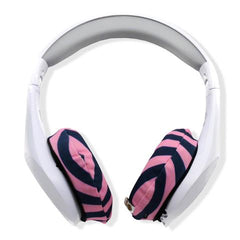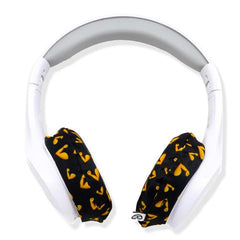4 Ways to Boost Your Workout Playlist

We all want to perform better in the gym but getting fitter, faster, stronger, leaner or heavier takes time and effort. Anything that can legally give you an edge over the competition or over a personal best is worth trying.
One of the easiest ways to help improve your performance is by boosting your workout playlist.
Listening to music won’t make you fitter than you currently are. You can’t snap on your headphones, put on your favourite pair of EarHugz, start-up the Flash Dance soundtrack and expect to suddenly start running 4-times faster.
But one of the clever ways in which music helps improve our performance is by distraction: we don’t feel as if we’re working out as hard as we actually are. Music can be a great mood enhancer, too, which can keep us running or lifting for longer.
Dr Costas Karageorghis is a reader in Sports Psychology at Brunel University in London. He’s been researching in this field for some years and has found that music can boost athletic performance by 15%.He talks a lot, too, about athletes being ‘in flow’.
Being in-flow is a little like doing something on auto-pilot and it’s this state-of-mind that many athletes aim for. Music helps to induce alpha-waves which in turn can help a person to reach an in-flow state. Things tend to feel easier when we’re on auto-pilot and that’s no different in sports.
Most of us would agree that music helps increase our workout but does your choice of exercise music make a difference? Is one workout playlist better than another.
The Secrets to a Performance-Enhancing Workout Music
- Your Opening Tracks Should be Heavy on Bass
Those tested in the study listened to 31 30-second music clips with different bass-levels and it was found that high-powered music did make the individuals feel more powerful.
Two reasons why this might be have been put forward by researchers.
Contagion theory suggests that when people hear certain elements in music they then replicate these feelings internally. Conditioning theory, on the other hand, suggests it could be that we associate certain songs with power and victory.
The Eureka Alert website uses the example of “We are the Champions” played at sporting events.
Either way, music that we recognise as powerful can help us become more powerful and decisive in our own workouts. Additional research is needed but it’s an interesting hypothesis. And perhaps it’s something that’s been known anecdotally for some time: take a look at the most exercise-marketed CDs and playlists and you’ll find that most tracks on them (for cardio at least) are big, fast and powerful songs.
If you’re having trouble choosing which songs to pick, then think about the type of music played at the beginning of a boxing or wrestling match.
-
Pick a High BPM for Midway
A study by the University of Ghent in 2002 analysed more than 74,000 songs and found that those with 120 BPM were the most popular.
Interestingly, Scientific American writes that when asked to walk or tap their fingers most people ‘unconsciously settle into a rhythm of 120 beats per minute’.
Somewhere between 120 and 140 BPM appears to be the sweet spot for most people.
You can type a song title into JogFM.com and it will tell you the BPM.
You can also listen to other people’s playlists if you want to use music to help you hit a target or time.
There’s a 10-minute mile mix, for example, that includes Queen’s A Crazy Little Thing Called Love (153 BPM), Sunday Morning by Maroon 5 (88 BPM) and My Sharona by The Knack (148 BPM).
It’s interesting that Dr Costas Karageorghis says there’s no real value in going above 140 BPM.
3. Refresh Your Playlists and Mix It Up
Working out to your favourite songs might seem obvious but it’s worth mixing up the order of your playlists as well as regularly creating new ones so that you don’t get bored.
You can also listen to remix versions for fresher versions of older songs.
It’s easy to find specially curated workout playlists on music streaming services. Many have a feature, too, where you can listen to similar or recommended tracks so by expanding your workout playlist you might also discover an artist or band that you can enjoy outside the gym, too.
4. Keep the Songs Short
One of the biggest takeaways from Dr Karageorghis’s research is that music can make it feel as if we’re putting less effort into our workouts.
One way to help with this is by keeping the songs short.
It’s easy to download that epic 9-minute version of a song you love but 9 minutes in the gym can feel like a very long time when you realise that you’re only 4-minutes into the guitar solo. Skipping tracks can break us out of our flow state. Be realistic about what you like when you’re listening to workout music. Your playlist may look very different from the ones you enjoy when you’re not on the treadmill or at the rack.
Music is more than just noise in our ears when we workout. It can help us to work harder and to feel more powerful. It’s a distraction, a mood booster and it can help get us into an in-flow state.
If you’re ready to rock (or pop or jazz or Mongolian throat sing) your way to a better workout then pair your headphones with EarHugz.
EarHugz are sweat-proof covers that protect the cushion from moisture damage during exercise.
They’ll keep your headphones dry and fresh so you can keep listening to your workout playlist for years to come.
What music do you listen to when you exercise? Maybe you prefer to run without your headphones - let us know in the comments below :)








